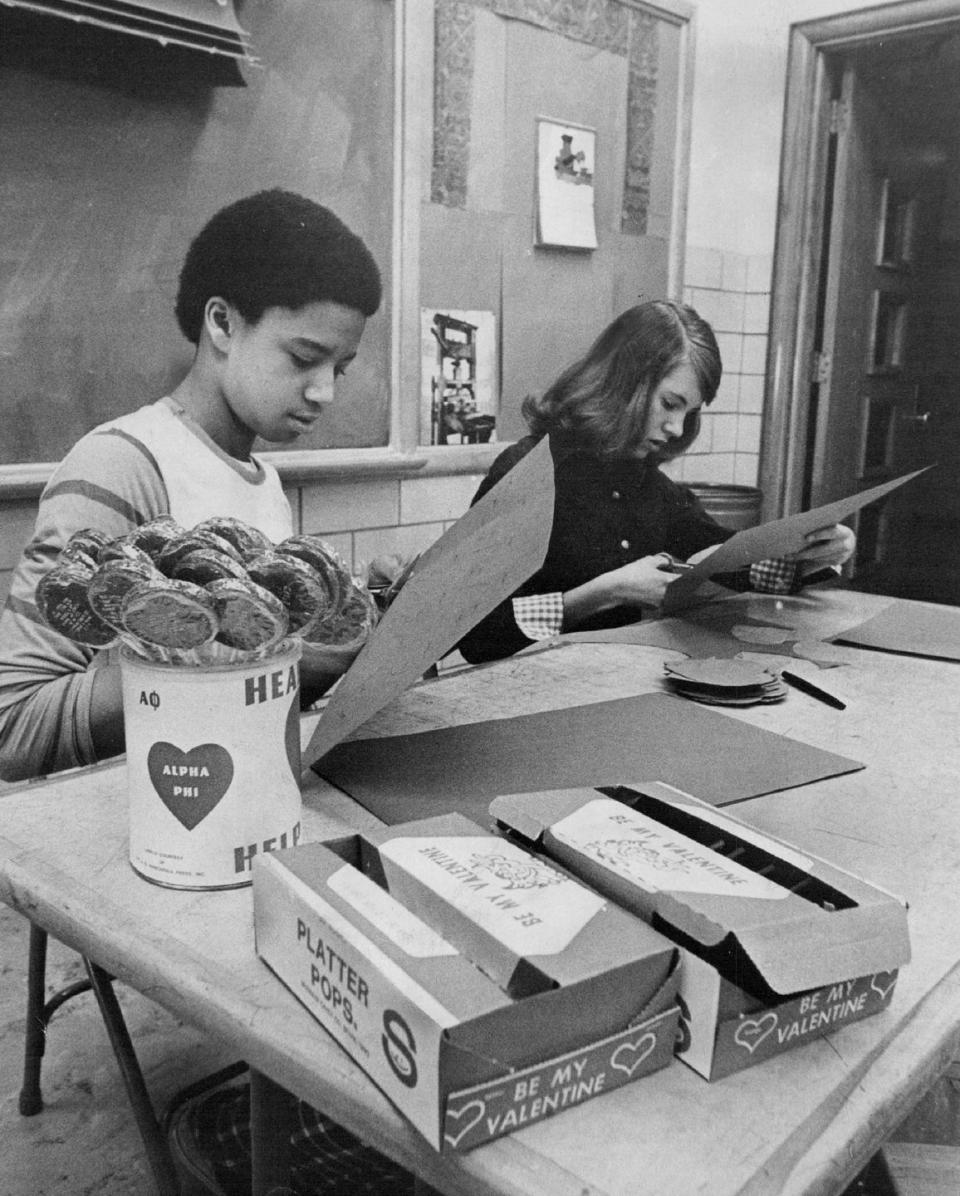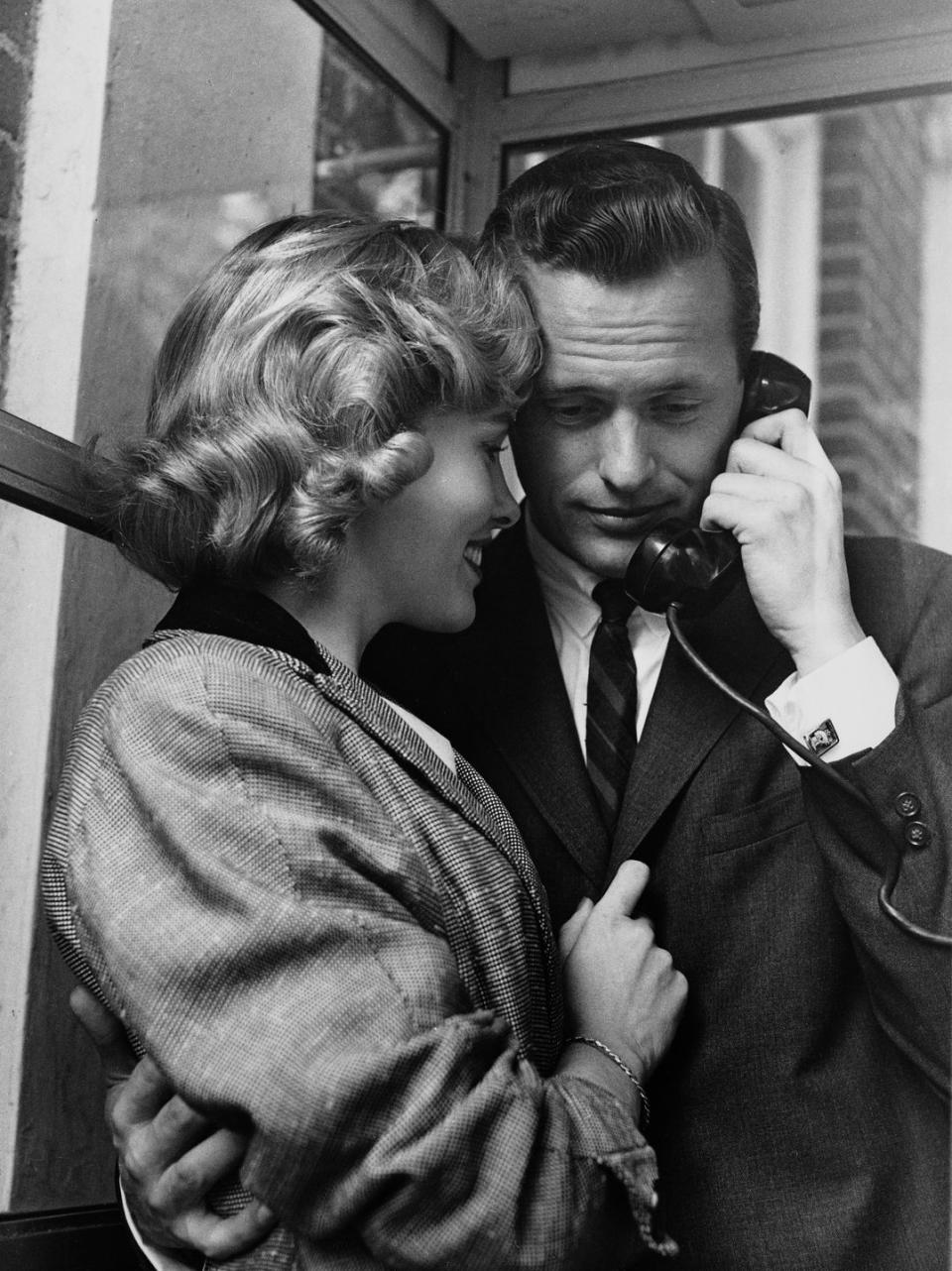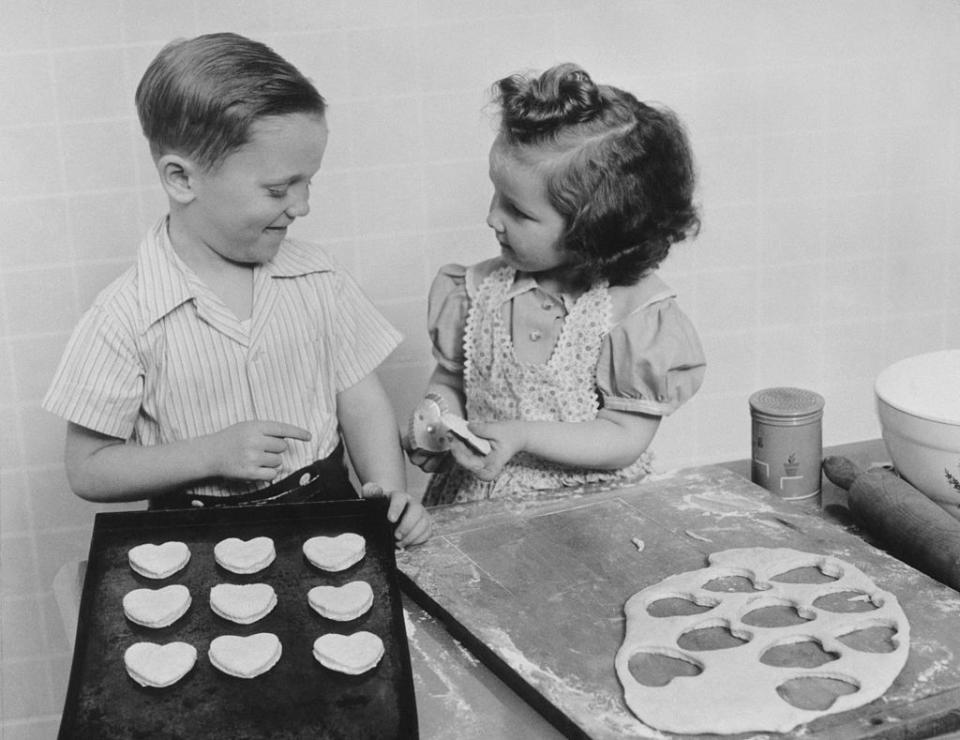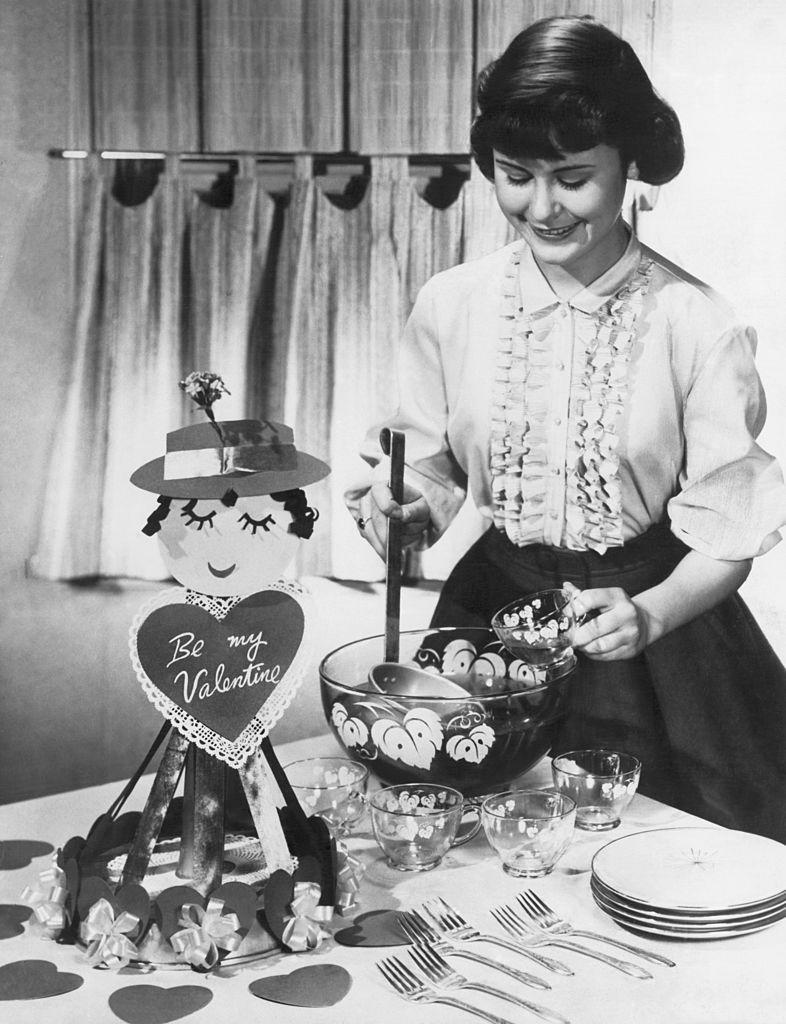You'll Love Learning These Surprising Valentine's Day Facts

When it comes to Valentine’s Day, there are certain traditions—like flowers and chocolate—that we take at face value despite not knowing their true significance to the holiday. But there are some surprising numbers and facts behind those Valentine’s Day gifts and desserts that we look forward to every February 14. For instance the annual consumption of heart-shaped boxes of chocolate is a staggering number that you probably never would have guessed (think: eight figures). And don’t even get us started on the significance of lace doilies in our Valentine's Day crafts.
Here, we're sharing a list of our favorite Valentine's Day facts in the hopes that they'll make each caramel-covered, ooey-gooey, chocolatey treat that much sweeter—and each Valentine's Day card that much more fun to write. After all, if you really love the holiday, you might as well learn everything there is to know about the history of Valentine's Day, right? Like, who St. Valentine is, anyway. (He’s different from Cupid, right?)
You could even make a Valentine's Day activity out of quizzing your partner on some of these trivia-ready facts. (Just make sure you reward them with a delicious steak dinner—this is Valentine's Day we're talking about, after all!)
The symbol of roses traces back to a mix-up in the 18th century.
According to Time.com, the concept of flowers having different meanings dates back to the 18th century when Lady Montagu sent a series of letters from Turkey to her home in England describing the Turkish flower language known as sélam. She misinterpreted it to mean that every flower symbolizes a different sentiment used to send love letters. Though this wasn't exactly true, the concept spread throughout society with the publication of a dictionary for the language of flowers in 1819. In turn, sales of roses (a perceived symbol of love and beauty) skyrocketed in the 19th century.

The term “lovebirds” isn’t just a figure of speech.
“Lovebirds” is commonly used to describe two people who are very much in love, especially around Valentine’s Day. But did you know that the taxonomic origin of this figure of speech is more literal than its everyday use? The word is also the common name for Agapornis birds, native to Africa. The brightly colored parrots mate for life, travel in pairs, and even feed each other—similar to couples you might see when going out to eat on Valentine’s Day.

Valentine's Day is one of the most popular days to get engaged.
According to a survey from Wedding Wire, Valentine's Day was the most popular day in 2020. This matches up with plenty of other surveys which have found that February 14 Christmas, and New Year's are all dates that people love to pop the question.

People like to celebrate their pets on Valentine's Day.
In 2020 alone, people planned to spend a whopping $1.7 billion on their pets for the holiday of love. That means toys, clothes, beds, and more! The real question is, are gifts for our pets really just presents for ourselves?

When did Valentine's Day become a holiday?
Near the end of the fifth century or around 500 A.D., Pope Gelasius declared February 14 as St. Valentine's Day. As for the origin and reasoning, that's a bit murkier.

The oldest known valentine was written from prison.
Yep, you heard that right! Charles, the Duke of Orléans, was imprisoned in the Tower of London when he was 21 years old. In 1415, he wrote a letter to his wife with a poem that used the term "Valentine" to refer to her. The first line read, "My very gentle Valentine," and is considered by many to be the very first recorded valentine.

The highest grossing movie of all time is a love story.
The movie that made the most money of all time was the historical romance Titanic which brought in $659 million total at the domestic box office. Well, it held the title of highest-grossing until Avatar came out twelve years later.

Lace has a romantic meaning.
Lace can be seen all around on Valentine's Day, from ribbons to gift boxes. Well, the word itself has an origin befitting the holiday: the English word "lace" comes from the Latin word for "snare", as in you ensnare someone's heart. Put that in your next Valentine's Day card!

Who invented conversation hearts, the candy?
Pharmacist Oliver Chase initially cut medicinal lozenges by hand but eventually started making versions without medicine because candy was becoming popular. In the mid 1800s, he invented a lozenge-cutting machine to speed up the process and later a lozenge-printing machine to print words onto candy.

An important invention was declared on Valentine's Day.
How do you let distant loved ones know you care on valentines day? Probably a call or text. Alexander Graham Bell, the man who invented the telephone, applied for a patent on February 14, 1876.

Who was St. Valentine, the person?
It's unclear: For starters, there was more than one St. Valentine. Some historians point to a third-century Roman priest who secretly married couples in defiance of the Roman emperor Claudius II Gothicus. Others point to a different priest—this one thrown in jail for attempting to assist Christians in Roman prisons.

Valentine's Day was initially a Roman fertility festival.
Yep, you read that right! We won't get into the gory details, but it goes without saying that those first celebrations were a far cry from the Valentine's Day we know and love today.

Cupid wasn't always a sweet, innocent baby.
Instead, the real Cupid was an "unconquerable" mythological God named Eros, according to Time.com. He was initially depicted as a young man who, despite being handsome and possessing the capability to make people fall in love, was also quite threatening.

People really did used to "wear their hearts on their sleeves."
During a Middle Ages festival that celebrated the goddess Juno, Roman men were known to have drawn the names of potential partners on their arms.

Valentine's Day costs a *lot* more than you might think.
The National Retail Federation reported that Americans spent more than $21 billion on Valentine's Day gifts in 2021 alone. And that was during the ongoing pandemic, for goodness' sake!

Pets get Valentine's Day gifts, too—a lot of them!
Another statistic from the National Retail Federation claims that gifts for pets made up a whopping $1.3 billion of the money spent on Valentine's Day in 2021. That's more than the $1.1 billion spent on coworkers!

We have Richard Cadbury to thank for Valentine's Day chocolate.
The tradition of eating chocolate on Valentine's Day is mostly due to the efforts of one man, Richard Cadbury, the son of the Cadbury Chocolate manufacturer. Simply to encourage more sales, he started packaging his chocolates in heart-shaped boxes—and, well, the rest is history.

Valentine's Day is the busiest day of the year for florists.
It's ahead of Christmas and Mother's Day. (Sorry, Mom!) By the way, more than half of Valentine's Day flower purchases are roses—but we bet you knew that.

It's not clear why "X" signifies a kiss.
Dozens of plausible theories abound, but they've simply never been confirmed. And we're not the only generation that's been confused. According to The Washington Post, there are many citations from as early as 1880 that bemoan the perplexing symbol. One such poem reads, “Why do our sweet sentimental young misses / In love letters make little crosses for kisses?”

Approximately 36 million heart-shaped boxes of chocolate are sold each year.
Yes, 36 million. Just so we're clear, that's a total of 58 million pounds of chocolate! Makes you feel a little better about the few extra pieces you ate after dinner, doesn't it?

At least 145 million Valentine's Day cards are given each year, too.
By the way, that's in the U.S. alone—and it doesn't include the cards given by children to each other within their classrooms at school. It makes sense, then, that Hallmark has reported Valentine's Day to be the second most popular card-giving holiday, just after Christmas.

Conversation hearts take the cake in terms of production numbers, though.
Every day—yes, day—approximately 100,000 pounds of conversation hearts are produced. That's about eight billion conversation hearts per year. And nearly all of those are sold during a brief, six-week period between January 1 and Valentine's Day. It's no wonder they're the top-selling Valentine's Day confection after chocolate.

Hershey makes more than 80 million chocolate "Kisses" daily.
It's often head-to-head with M&Ms for the title of "top-selling candy in America." Curious about the third ranking? Why, it's Reese's Peanut Butter Cups, of course!

Galentine's Day is incredibly popular these days, too.
The made-up holiday was first mentioned in a 2010 episode of the TV show Parks and Recreation, and it's since kickstarted a massive, nearly unbelievable wave of "friend to friend" spending. The National Retail Federation states that since 2010, such friendly gift expenses have practically tripled to $1.6 billion.

On average, consumers plan to spend upwards of $150 on their partners and loved ones.
To be precise, the National Retail Federation estimates that consumers planned to spend an average of $164.76 on their recipients in 2021. And even with a decline in restaurant dining during the pandemic, 41 percent said they'd still plan a special dinner or celebration at home. The standards are high!

You Might Also Like

